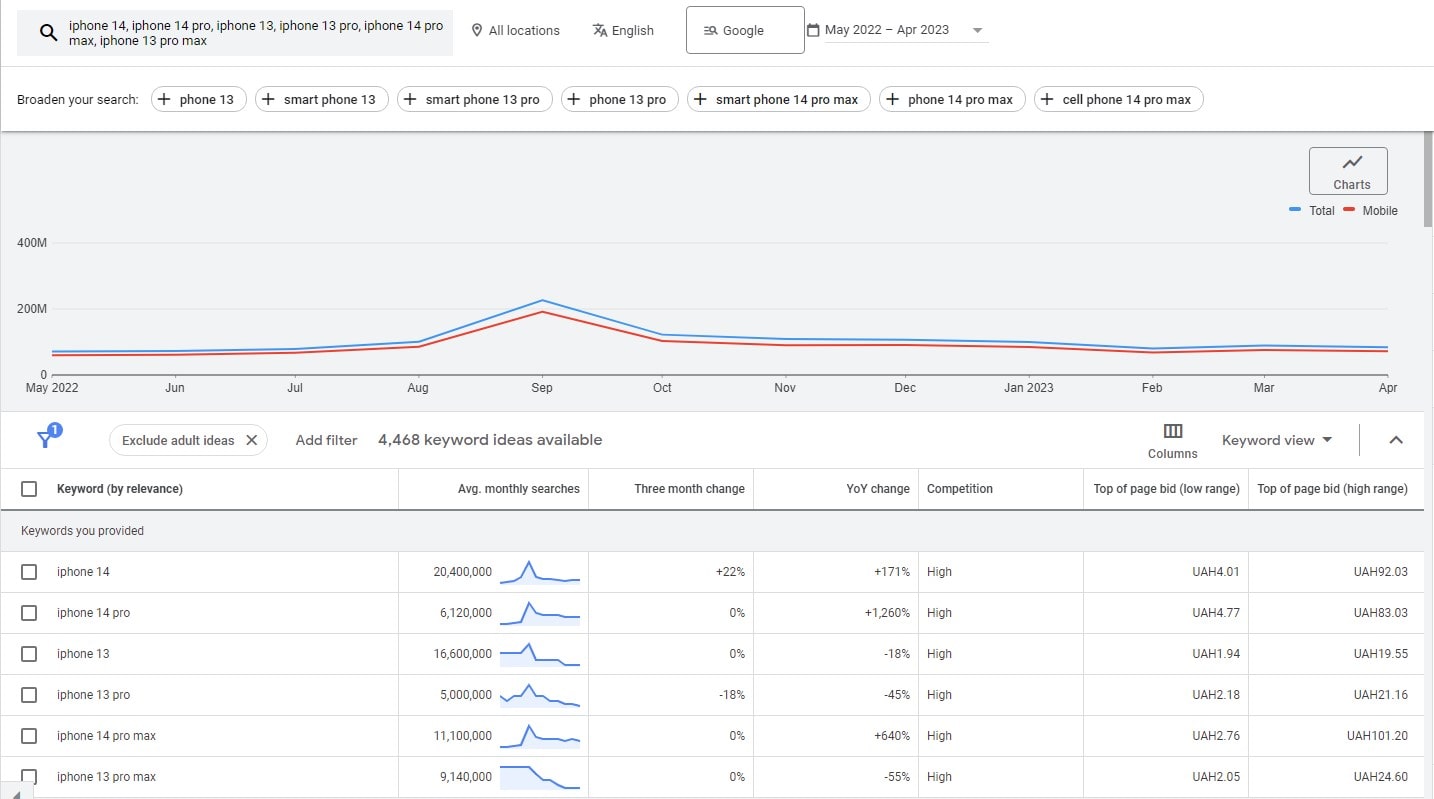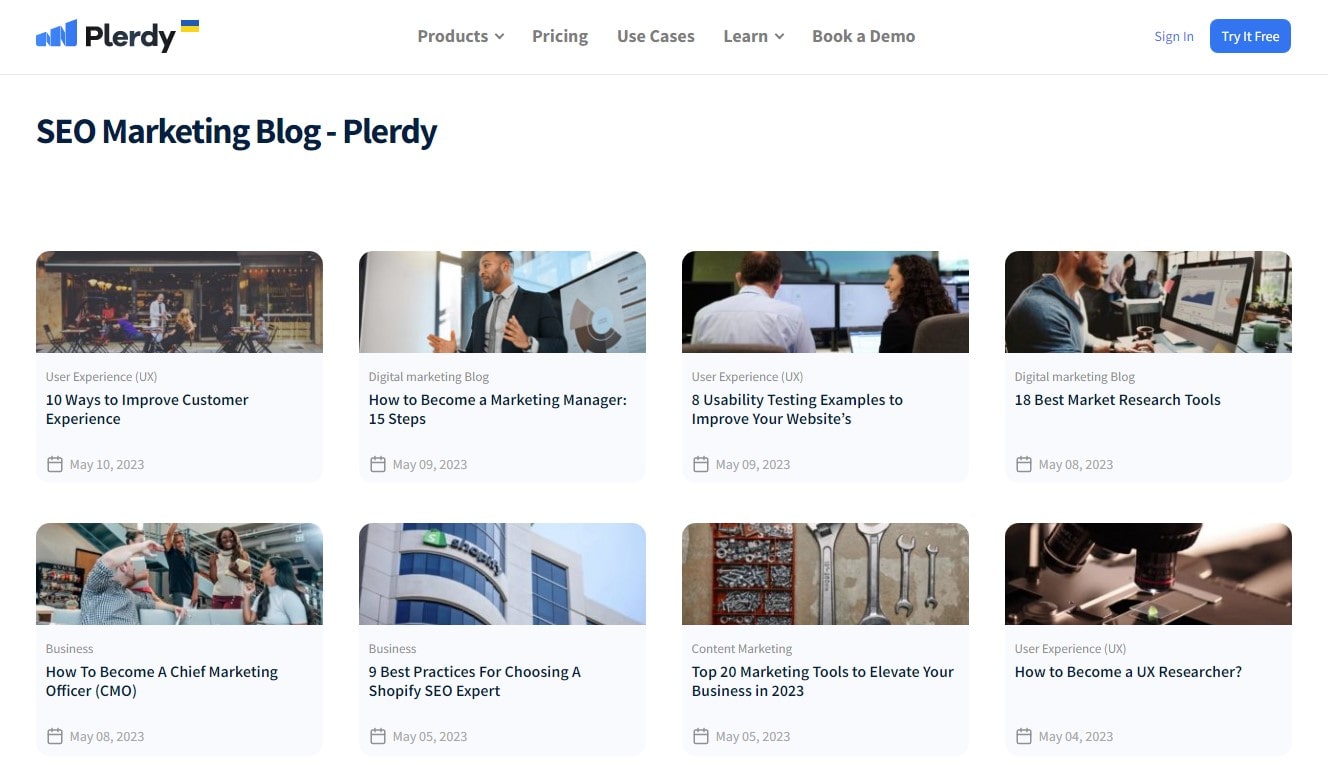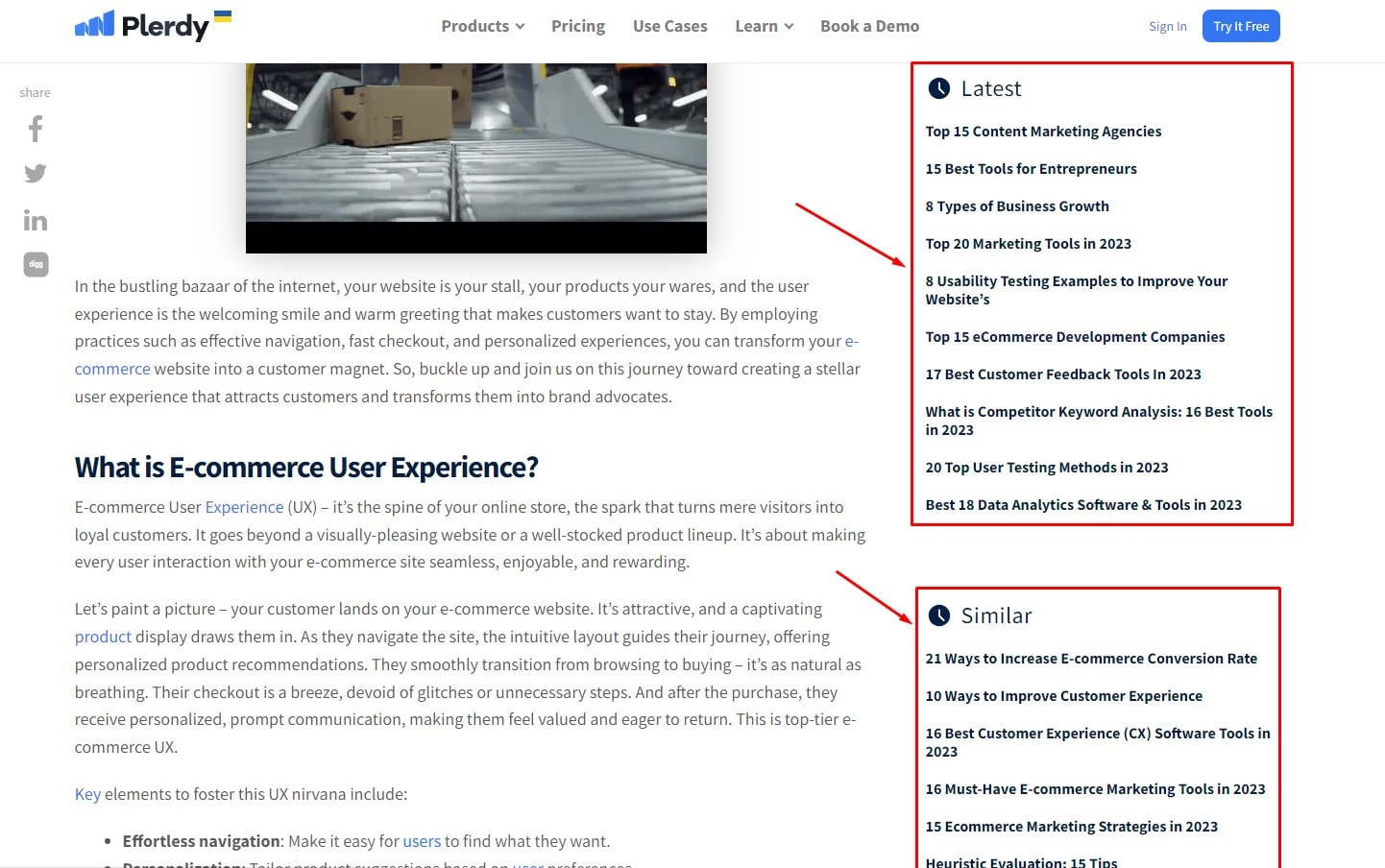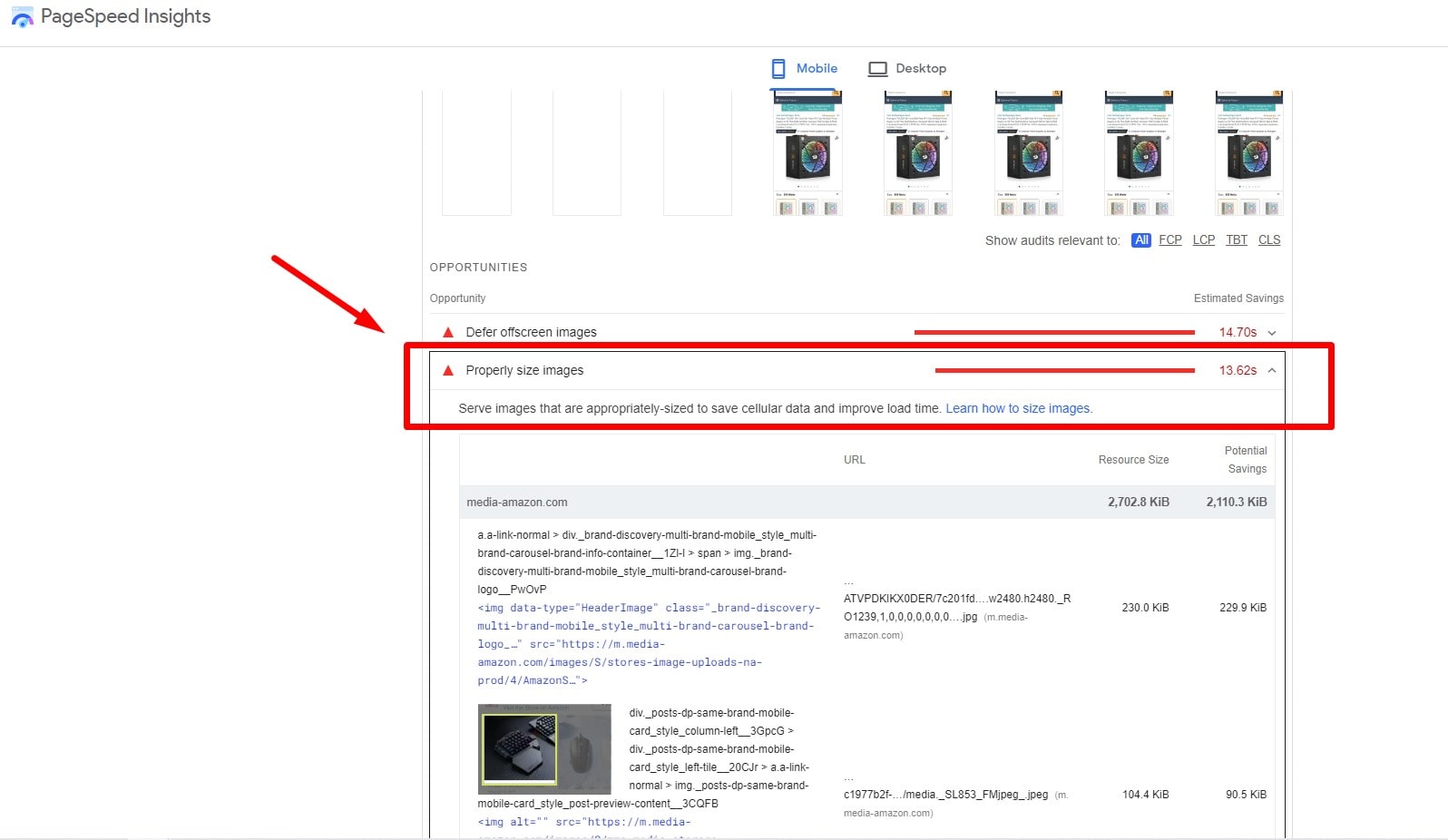“15 Ways to Improve SEO Rankings” is your road map for negotiating the intricate world of SEO, where every click and term is a step closer to online success. This post is meant for people who understand that their website is a growth engine, a storyteller, and a market leader in addition to being a virtual place.
Principal tactics you will look at include:
- Relevancy and interaction optimization of content.
- Enhancing backlink profiles with high caliber links.
- Site structure refinement for smooth user experiences.
Such changes are based in SEO expertise; picture a tiny company becoming into a giant in the sector or a local blog becoming a go-to source. Beyond advice, this post is an opportunity to reconsider how you approach online presence. To improve this trip, think about using Plerdy’s analytics tool—it’s great for examining user activity. By means of A/B testing, usability enhancements, or conversion rate optimization, data is transformed into useful insights. Your initial step to getting your rightful spot at the top of search results, where your website flourishes, is to read “15 Ways to Improve SEO Rankings”.
Understanding the Importance of SEO Rankings
The foundation of increasing website visibility and generating organic traffic in the digital age is SEO. SEO strategies that are mastered raise rankings and put your website at the top of search engine results. When consumers look for health-related advice, for example, SEO optimization makes sure that a medical website appears higher. This tactic raises the discoverability of websites and gives them user credibility and confidence.
Think about these essential actions to improve SEO:
- Ensure that website content is optimized using pertinent keywords that correspond with user search intent.
- Increase the speed at which your website loads; faster websites typically rank higher.
- For your website to gain authority, create excellent backlinks from reliable sources.
Concentrating on these components can help your website rank much higher in search engines. Consequently, traffic, interaction, and, eventually, conversion rates all rise noticeably. Recall that SEO is an ongoing process that needs to be adjusted and improved to match changing search engine algorithms, not a one-time fix.
Why TOFU, MOFU, BOFU Matters in SEO
In the realm of search engine optimization, creating a plan that improves website rankings requires an understanding of the TOFU (Top of Funnel), MOFU (Middle of Funnel), and BOFU (Bottom of Funnel) stages. From awareness to decision-making, these stages chart the path of the client, and customizing content for each stage greatly increases the appeal of your website to various audience groups.
- TOFU: Prospective clients are only getting started at this point. Here, well-written instructive material increases the visibility of your website and attracts visitors looking for general information. A travel website might, for instance, include blog entries about popular travel spots.
- MOFU: This is where your audience is weighing their alternatives. To raise rankings and direct visitors toward a conclusion, SEO efforts should concentrate on comparison guides or reviews. One tech website might, for example, provide thorough comparisons of the newest cellphones.
- BOFU: Decisions are taken at this last phase. Conversion rates of your website can be raised with appealing calls-to-action or SEO-optimized product pages. One way an e-commerce website may close a sale is with focused product descriptions.
Including SEO techniques suited to every stage of the funnel guarantees a thorough approach and raises website rankings generally. By engaging and converting visitors, this approach maximizes the potential of your website in the digital market.
Explanation of How SEO Works

Deciphering the secrets of SEO, we explore a virtual maze where calculated actions raise website ranks. SEO is really a complex dance of website optimization to fit search engine algorithms. Beyond only placing keywords, this optimization includes:
- Keyword Integration: The content of the website gains relevance and rankings when pertinent keywords are carefully included throughout.
- Quality Content: A website’s rankings rise when it produces interesting, educational content that positions it as an authoritative source.
- Site Performance: Improving the mobile friendliness and speed of loading of the website has a direct effect on its SEO performance.
A food blog that uses SEO, for instance, will not only include culinary jargon into its recipes but also make sure that its website runs quickly and looks good on mobile devices. SEO turns a website from an invisible digital ghost town into a busy center where better rankings translate into more traffic and visibility.
The Importance of SEO for Businesses
In the digital economy, search engine optimization (SEO) is the invisible power pushing businesses ahead. This method does more for a website than just increase its visibility. Consider SEO to be the virtual handshake that a business offers to potential customers. It ensures that people will locate your website instead of that of your competitor while searching for a good or service.
Main benefits include:
- Increased Visibility: By raising its rankings, SEO puts a website in the forefront.
- The traffic that is targeted is that which draws visitors who are really interested in the information on the website.
- A well-optimized website makes a statement even in crowded markets.
Search results for the phrase “finest cupcakes in the locality” would show the website of one local bakery that employs SEO strategies, for instance. This would increase in-person business and promote the bakery’s profile online. Companies who integrate SEO into their digital marketing plan become powerful tools that draw in, convert, and retain visitors to their websites.
1. Search For Missing Keywords With Google Search Console Integration

Excellent tool for SEO Google Search Console offers companies attempting to improve their SEO rankings priceless information. This tool points up areas where your website might be underperforming, therefore serving as a navigation system for the convoluted terrain of search engine results. When one uses the Google Search Console for SEO, they
- Discovering Missing Keywords: Discover which important keywords aren’t bringing visitors to your website right now.
- Analysing Search Performance Discover how your current keywords appear in search results and pinpoint places that want work.
- Formulating a Content Plan Connect the information on your website to the real search trends of your visitors.
This feature may be used, for instance, by a fitness website to discover that whilst ranking highly for “workout routines,” they are missing out on potential visits for “home exercises.” They can create material designed for this specific set of people using this information. Combining with more user engagement, this proactive approach improves SEO significantly. A Google Search Console integration has to be part of any SEO ranking strategy.
2. Keyword Research

Keyword research, which finds the words and phrases necessary to raise a website’s ranks, is businesses’ compass navigating the SEO landscape. Identifying the specific language your target audience uses to search online is the strategic objective of this research, not just hunting for popular terms.
Within keyword research, significant stages include:
- Locating Core Issues: Focusing on subjects relevant to your audience and business.
- Analyzing search terms is looking at the specific terms and searches that your target market uses.
- Finding out how difficult ranking for these terms will be is part of evaluating competitiveness.
By doing keyword research, a health and wellness website may rank for specific terms like “holistic stress management techniques,” which enables them to produce content that directly appeals to their intended audience. By carefully researching and using these terms, you may improve rankings and increase website traffic while also improving the usefulness and value for visitors.
3. High-Quality Content

Great content is what draws people to a website and is therefore essential to successful SEO tactics. Creating stuff that your readers will like is like finding gold while trying to raise your rankings. Just as crucial as stuffing articles with keywords is to write ones that educate, captivate, and inspire.
Major components of excellent content include:
- Relevance is the ability to adapt material to the interests and needs of your intended audience.
- Being original means more than just restating things; it means putting out new ideas.
- Confirming the readable and understandable nature of the material.
Look at a webpage on travel. The website requires content that does more for its SEO than just list locations; it should enthrall visitors with in-depth explanations, useful advice, and local knowledge. This strategy not only raises website ranks but also cultivates a devoted audience that considers your website to be a reliable information source. Thus, excellent content is essential to the interaction between your website and its users and to the success of digital marketing. Not merely an SEO ploy, then.
4. Optimize Website Speed

The world of SEO moves quickly, and website performance optimization is essential to raising rankings. Websites that load quickly enhance user experience and give search engines a signal of reliability, which boosts SEO.
Important measures to improve website speed consist of:
- Reducing file sizes without compromising quality to improve load times is known as compression of images.
- Streamlining Code: Reducing extraneous characters from JavaScript, CSS, and HTML.
- Using browser cache: storing components locally to expedite next visits.
When product photos and pages load rapidly, for instance, an e-commerce website can greatly enhance both its user experience and SEO rankings. Customers are kept interested in and motivated to investigate other products by this. Companies who give website speed top priority not only enhance the performance of their website but also fortify their SEO plan, which results in better ranks and more exposure in the online market.
5. Mobile Optimization

For SEO, mobile optimization is the digital alchemy that transforms casual surfing into gold. Making sure your website is mobile-friendly is essential to raising ranks in a world when cellphones are the new entry points to the internet. Not only does a website that is mobile-optimized satisfy the great majority of customers, but search engine algorithms also prefer websites that offer a great mobile experience.
Complementary elements of mobile optimization consist of:
- Responsive design is making sure that different screen sizes are seamlessly adapted by your website.
- Quick Page Loading: Quickening page loads for a more seamless mobile experience.
- Simplified Navigation: Creating an understandable and practical mobile interface.
Take a restaurant website; mobile optimization allows patrons to easily use their phones to get location information, make reservations, and browse the menu. This increases user interaction, which alerts search engines to raise the website’s SEO ranks. More than just making your website accessible, mobile optimization puts your target audience in control of it, which is excellent for SEO.
6. Use SEO Friendly URLs

SEO URLs are akin to well illuminated roads for crawlers and visitors. Search engine rankings of a website can be greatly improved by this sometimes disregarded SEO strategy. Correctly structured URLs that lead to the right content can enhance both the user experience and search engine optimization (SEO) efficacy of a website.
Important components of URLs that are search engine friendly consist of
Clarity: Employing evocative, simple language that captures the essence of the page.
Short URLs are those that are direct and concise.
Keyword integration is adding pertinent keywords to increase SEO value.
An URL for a gardening website, for instance, might be “www.gardenheaven.com/organic-vegetable-gardening-tips” rather than anything ambiguous or numerical. This helps to raise the website’s ranks by making the link easier for search engines to understand as well as more clickable for users. Effective tools in the SEO toolbox, SEO-friendly URLs improve search engine and user experience exposure. They are more than just simple web addresses.
7. Improve User Engagement With Plerdy

A dynamic application called Plerdy transforms the way websites improve user engagement—a key component of improving SEO rankings. Consider Plerdy to be a digital conductor who arranges the components of a website to work together harmoniously to enhance user experience and interaction.
Among the main advantages of Plerdy are
- Improved User Interaction: Plerdy offers data to improve user experience by monitoring how users interact with your website.
- Conversion Optimization: By helping to find and fix navigational problems, it raises the possibility of conversions.
- SEO is benefited by increased user involvement since search engines give preference to websites that provide a better user experience.
Plerdy, for example, might be used by an online clothes store to examine how users interact with their website and find and fix any obstacles in the purchasing process. This raises the website’s search engine rankings as well as its usability because happy visitors are more inclined to come back and tell others about it. Plerdy, then, is a strategic ally as well as a tool in the effort to improve the online performance of a website.
8. Social Media Signals

In digital marketing, social media signals increase website visibility and search engine rankings. Search engines see a website’s credibility as increased by these signals, which are produced by social media activities.
Principal effects of social media signals on search engine optimization include:
- Enhanced Traffic: Social shares increase website traffic, which helps SEO inadvertently.
- Increased Brand Recognition: Brand recognition from active social interaction can improve search results.
- Better Distribution of Content: Social media facilitates the broad distribution of content, thereby extending its reach and maybe generating backlinks.
A popular health tip post, for instance, may greatly increase website traffic for a health and wellness blog that uses social media. This increases direct traffic and, by signaling to search engines the website’s popularity and relevancy, may raise its rankings. As such, including social media into your SEO plan is a calculated step to increase the authority and reach of your website, which is necessary to rise up the SEO ladder.
9. Backlinks

A key component of any SEO plan, backlinks act as virtual conduits connecting different internet locations to your website. These outside links not only direct visitors to your website but also serve as recommendations, raising the authority and rankings of your website in search engine results.
Basic to successful SEO strategies, backlinks:
- Strengthen Authority: Reputable websites’ high-quality backlinks increase your website’s SEO authority.
- Boost Visibility: Every backlink raises the profile of your website, increasing visibility and SEO value.
- Increase Rankings: Backlinks help your SEO efforts since search engines see them as signs of the caliber and relevance of your content.
Search engines can tell a gourmet cuisine website is important in the culinary world, for instance, when a well-known food critic connects to it. This draws foodies and raises the website’s search engine results. Getting high-quality backlinks therefore entails not just growing the quantity but also carefully improving the SEO of your website and creating a network that points search engines and users to your online presence.
10. Internal Linking

Like creating a web inside your website, internal linking is a technique that greatly raises SEO ranks. By adding connections between your website’s pages, you not only improve user navigation but also help search engines interpret and assess the material of your website.
Advantages of efficient internal connecting consist on:
- Enhanced Navigation: Enables simple navigation throughout your website, therefore enhancing user experience.
- Improved Page Authority: Spreads page authority throughout your website, strengthening the SEO of certain pages.
- Enhanced Content Visibility: Your content gets indexed and ranked by search engines.
Internal linking allows a blog article about healthy eating to link to a relevant recipe section on a health and wellness website. This helps the search engines as much as the reader because it shows how much content the website has. By carefully using internal links, you may improve the structure of your website and increase its SEO, therefore guaranteeing a more coherent and potent online presence.
11. Image Optimization

An essential but sometimes disregarded component of the SEO formula in the visually-driven world of the internet is image optimization. It takes more than just aesthetics to shape images so that they improve the performance and rankings of your website.
Image optimisation done well entails:
- File Size Compression: Speeding up loads without sacrificing quality.
- Using Relevant Keywords: In filenames and alt tags, matching photos to search terms.
- Ensuring that images show up well on many devices is known as responsive design.
For a fashion retail website, well-optimized photos could make the difference between a potential buyer remaining and leaving. Excellent, quickly loading photos of the newest styles can increase the attractiveness of the website and keep visitors there longer. By concentrating on image optimization, you strengthen the SEO basis of your website and increase its visibility and appeal to search engines as well as people.
12. Local SEO

Small businesses’ digital loudhailer, local SEO increases their visibility in local search results. When prospective clients in your area look for comparable services or products, this focused approach to SEO makes sure they find your website.
Important tactics for Local SEO success consist of:
- Optimise Google My Business: Making sure your profile is accurate and comprehensive.
- Local Keywords: Including terms particular to your area in the text of your website.
- Building Local Links: Getting backlinks from nearby companies and associations.
In Seattle, picture a neighborhood bakery. When someone looks for “best Seattle bakery,” it shows up at the top because to local SEO optimization. This raises website ranks generally in addition to increasing foot traffic. Local SEO is an essential tool for companies hoping to rule their local market because it goes beyond simple visibility to include being noticed by the right people at the right moment.
13. Regularly Update Content

Regular content update is like maintaining the robust and steady heartbeat of your website in the ever changing field of SEO. Search engines are shown that your website is active and changing by this frequent update, which also keeps it current.
Important features of frequent content updates consist of:
- Refreshing Current Content: To keep material current, facts, and statistics are updated.
- Adding New Content: Regularly putting out fresh pages, blogs, or articles.
- Maximizing Current SEO Best Practices: Editing material to comply with the most recent algorithms and SEO trends.
A tech news website, for instance, that updates its articles on the newest technology often will appear higher in search results because search engines like current, relevant material. In addition to improving the SEO performance of your website, regular content refreshment gives your visitors a richer, more interesting experience that builds authority and confidence in your field.
14. Use of Schema Markup

Schema markup provides search engines with standardized, easily interpreted illumination of the material on your website, much like a spotlight. Search engines can better grasp the material on your website and hence raise your ranks if you use schema markup, which is like giving them a comprehensive map.
Principal advantages of schema markup include:
- Improved Search Visibility: Improves search engine comprehension of your website.
- Rich Snippets: Provides extra information to your website’s search results appearance.
- Enhanced Click-Through Rates: More website visits result from visually appealing search results.
Schema markup allows a recipe website, for example, to include star ratings, cooking times, and calorie counts right in search results. This raises the attraction of the listing and, thus, its chances of moving up the search engine results pages. A calculated SEO move, schema markup makes your website a beacon that leads both search engines and visitors through the huge ocean of internet information to your content.
15. Website Architecture and Navigation

Building a website with logical architecture and navigation is like creating a well-designed map that leads users around your virtual environment. This methodical, unambiguous strategy not only improves user experience but also is essential to raising SEO positions.
Important components of navigation and architecture of a successful website consist of:
- Logical Structure: Clearly and hierarchically arranging material.
- Simple Navigation: Making sure people may easily locate what they need.
- Internal linkages are those that are made between pages to direct users and search engines.
Readers may easily identify categories, new releases, and bestsellers at an online retailer with a well-designed website, for instance. With this user-friendly method, search engines crawl and index the website more quickly, which improves SEO. Users are engaged. Essentially, well considered website architecture and navigation are essential elements that work together to increase a website’s visibility, accessibility, and ranking in the digital world. They are not only about looks or functionality.
Summaries
Upon completion of “15 Ways to Improve SEO Rankings,” it is evident that the process of improving the SEO of your website is continuous and dynamic. Discoverability of your website depends on every element, from preliminary keyword research to last-minute changes to backlinks and content.
We have, to sum up, looked at:
Power of all-encompassing keyword plans.
Effect of excellent, pertinent material.
The need of a strong backlink profile.
Recall, though, that SEO is really about endurance and adaptation beyond these foundations. Reading the minute changes in digital trends and adjusting your website appropriately is the key. Using the newest tools like Plerdy for user behavior analysis or improving your metadata—each move advances SEO.
Applying these ideas should be seen not only as chores but also as chances to have deeper connections with your audience. Furthermore keep in mind that there is never a finish line in the field of SEO; there are always new heights to climb and new accomplishments to unlocked. Maintain testing and learning, and permit your website to not only exist but also to lead and flourish in the digital sphere.
